#naval 12 pounder
Text
Field Gun Jack Versus the Boers: The Royal Navy in South Africa, 1899-1900 :: Tony Bridgland

View On WordPress
#0-8505-2580-2#armstrong gun#artillery actions#artillery battles#battle colenso#boer war#books by tony bridgland#british artillery#british naval history#first edition books#hms powerful#hms victory#joubert#klip river#ladysmith#lord lewin#military history#modderspruit#naval 12 pounder#naval brigades#paardeberg drift#roni wilkinson#royal navy#simonstown#south african history#south african war#spion kop#war crimea
1 note
·
View note
Text

She is a bit shy in door 8 today, but a very pretty French girl - L'Hermione
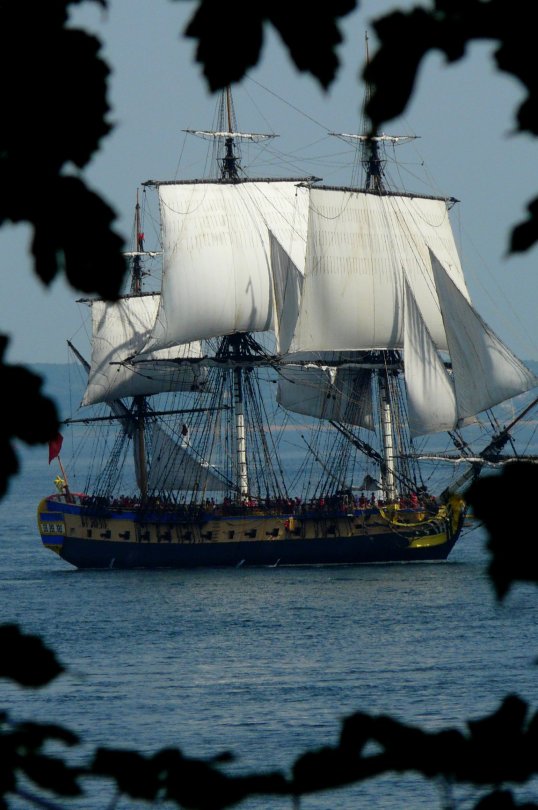
Départ de La frégate Hermione Lafayette du port de Brest, Fort du Dellec, 2019
More about her here:
Hermione is the name of the French frigate with which the Marquis de La Fayette returned to Boston in 1780 to support the American colonists in their fight for independence. The ship was completed in 1779 in the naval arsenal of Rochefort in a construction period of just eleven months, based on plans by Henri Chevillard and identical in construction to three other ships (la Courageuse, la Concorde, la Fée). These new light frigates were characterised by their manoeuvrability and speed. The Hermione was equipped with 26 cannons that could fire projectiles weighing 12 French pounds "poid de marc" (489.5 g). This is where the name "twelve-gun frigate" comes from. She also carried six or eight six-pounder guns. The empty weight was 1166 tonnes, the hull length 44.2 m, the overall length 65 m, the width 11.55 m and the depth 5.78 m. A sail area of more than 1500 m² was spread over three masts.
She experienced several battles and when the First Coalition War broke out on 20 April 1792, the Hermione returned to active service under Captain Martin. From 7 May 1793, she escorted convoys between Bayonne and Brest. In September 1793, she was tasked with escorting a convoy between the Loire estuary and the streets of Brest. On 20 September 1793, she ran aground off Le Croisic. The Hermione had a serious leak in the hull and could not be refloated in the receding tide. The crew threw 12 cannons and anchors overboard to stabilise the ship. The rising sea lifted the Hermione for a while, but she was so damaged that she could no longer pump water and sank to the bottom, where her hull began to disintegrate. At 1000 hours the next morning, Martin evacuated his crew in several fishing boats that had come to the rescue, salvaging as much equipment as possible, and was the last to leave the frigate.
The court martial that followed the wreck found the frigate's pilot, Guillaume Guillemin du Conquet, responsible for the frigate's loss; its commander, Captain Martin, was honourably acquitted.
A replica of the frigate has been under construction in a dry dock at the former Rochefort naval arsenal since 1997. As the original construction plans had been burnt for safety reasons, new plans had to be drawn up. The plans of a sister ship from the British Naval Museum, the Concorde, served as a model. The reconstruction of the Hermione was financed in part by the proceeds from the survey, grants from the French government and the EU as well as donations.
After its completion, the Hermione was launched in 2014. She left her building dock in early September 2014 for initial sea trials off the French Atlantic coast and sailed to North America in 2015, where she stayed for four months before sailing back. From 2 February 2018, the Hermione undertook a second major sea voyage from Rochefort to the Mediterranean via Tangier, Sète, Marseille and Toulon.
182 notes
·
View notes
Text

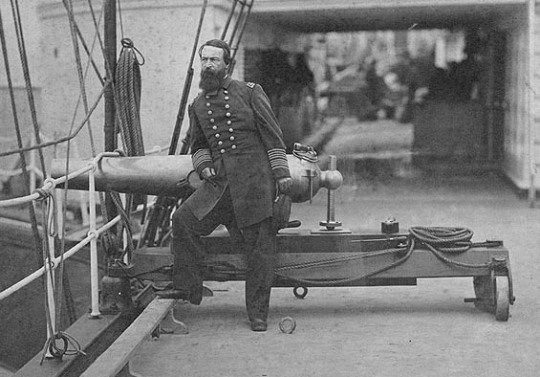





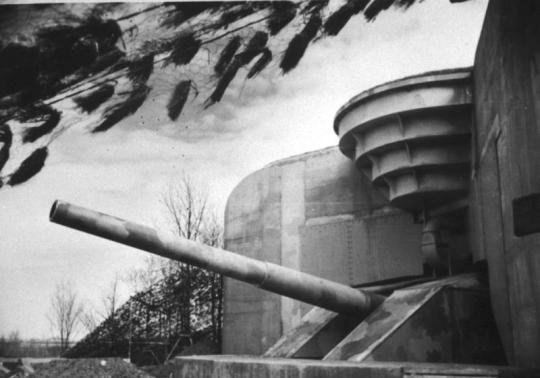
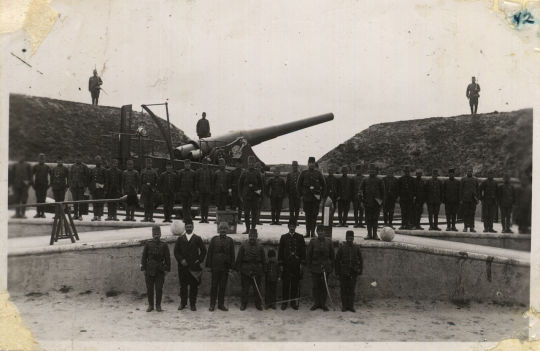
American Civil War ship cannons & parrot guns. Some shore guns. And a British 12 pounder naval cannon.
4 notes
·
View notes
Photo
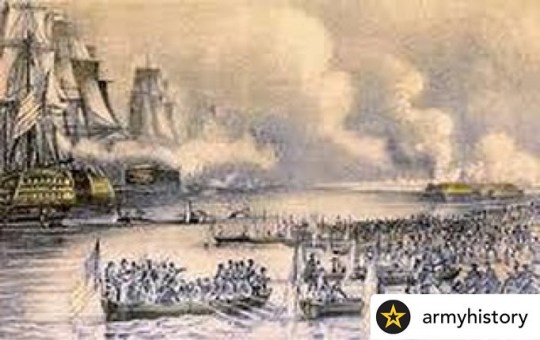
9 - 29 MARCH 1847 - SIEGE OF VERA CRUZ - #MexicanWar Major General Winfield Scott, in command of a U.S. Army expeditionary force numbering 13,660 men, rendezvoused at Lobos Island late in February 1847. On 2 March, the army sailed for Vera Cruz, convoyed by a naval force under Commodore Matthew C. Perry. Scott chose a beach nearly 3 miles south of the city, beyond the range of Mexican artillery, for the landing. On the evening of 9 March more than 10,000 men went ashore in landing craft, consisting of 65 heavy surf boats that had been towed into position by steamers. The troops advanced inland over the sand hills against little opposition from the enemy force of 4,300 Mexican troops ensconced behind the city's walls. The landing of artillery, stores, and horses was delayed by a storm on 12 March that lasted for four days. By 22 March, the Army had seven 10-inch mortars ashore and emplaced about half a mile south of Vera Cruz, and the bombardment began that afternoon. The enemy guns in the town and fort replied, and it became apparent that the American mortars were ineffective. Scott asked for and received six naval guns from Commodore Perry. The six weapons included three solid-shot firing 32-pounder long guns and three 8-inch ("Paixhans") chambered shell guns. The battery's fire soon breached the walls and demoralized the defenders. The Mexican commander asked for a truce to discuss surrender terms, which were agreed upon two days later. The city officially capitulated on 29 March 1847. The way was opened for the Army to advance on Mexico City. #Armyhistory #USArmy #TRADOC #MilitaryHistory #VeraCruz #WinfieldScott #Mexico #warwithmexico #thisdayinarmyhistory Posted @withregram • @armyhistory (at Army Recruiting Columbia, TN) https://www.instagram.com/p/CpkbLx7uFu1/?igshid=NGJjMDIxMWI=
#mexicanwar#armyhistory#usarmy#tradoc#militaryhistory#veracruz#winfieldscott#mexico#warwithmexico#thisdayinarmyhistory
0 notes
Text
Perry’s Victory on Lake Erie
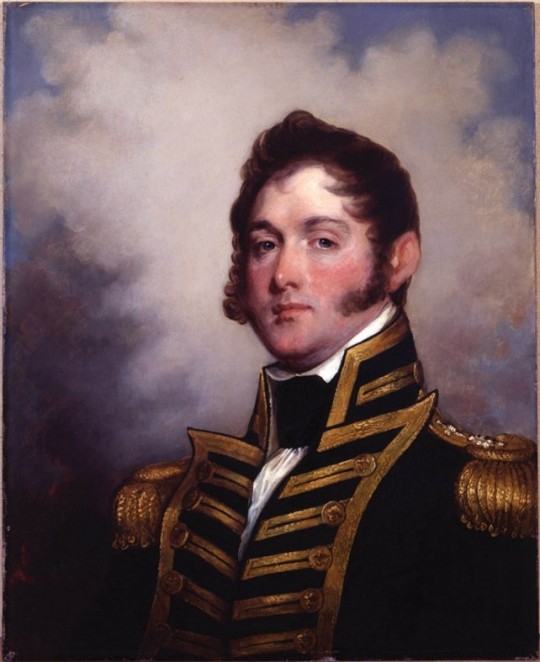
Photo provided by: Erie History
"On a beautiful September Friday in 1813, Oliver Hazard Perry’s nine-ship squadron of hastily built ships and converted merchant vessels defeated a six-ship British squadron off Put-in-Bay at the western end of Lake Erie. It was the first time in United States naval history that an entire enemy fleet was captured. This meant American control of the lake.
The story of Perry’s victory began the previous year. The United States declared war on Britain in the summer of 1812. Tensions had been brewing for some time. Westward expansion of the fast-growing nation was stalled by native tribes of the Midwest and stirred by the British in Canada and by the impressment, basically kidnapping of American sailors on the high seas, all of which fanned the flames. The United States had attempted to remain neutral, trading with both Britain and France, then embroiled in the Napoleonic Wars in Europe. In June 1812, Congress declared war on Britain.
In August 1812, Ft. Detroit, Mackinac and Ft. Dearborn (Chicago) all fell, resulting in British control of the Michigan Territory. Erie ship captain Daniel Dobbins was at Detroit when it fell and managed to make his way to Erie where Pennsylvania Militia commander for the region Gen. David Mead told him he needed to take the news of the defeat to President James Madison in Washington, D.C. There, Dobbins convinced officials of the need to build a naval squadron on Lake Erie, and he knew just the place to do it. Erie, with its protected bay, would make a perfect place to build and equip a fleet. With $2,000 in his pocket, Dobbins returned to Erie to begin his enormous task.
The only resource at his disposal there was timber. Everything else, iron, cannon and men would have to come from elsewhere. In a hastily constructed shipyard at the foot of modern Cascade St., Dobbins began the construction or conversion of six ships in Erie. In January 1813, Commodore Isaac Chauncey, commander of all U.S. naval forces on the Great Lakes, arrived from Lake Ontario. He instructed Dobbins to enlarge two of the partially built ships. Later that winter, seasoned ship builder Noah Brown arrived and the construction of two lager briggs, later to be Named Lawrence and Niagara, began. Brown wrote “Plain work is all that is required; they will be wanted for only one battle.”

Photo provided by: Erie History
In March 1813, 27-year-old Master Commandant Oliver Hazard Perry arrived in Erie to take command. A veteran naval officer, Perry had been languishing without a command, most of the U.S. Navy then being blockaded in Atlantic ports by the British navy, the largest in the world. Perry faced many challenges, foremost of which was a shortage of men. Perry grew frustrated with what seemed to be a lack of cooperation with Commodore Chauncey. His fleet would set sail that August with fewer men than Perry wanted and only about 200 experienced sailors among them, and an undetermined number of African American sailors. Many of these men had seen previous service aboard the U.S.S. Constitution earlier in the war. Perry complained that too many of his men were “a motley set-Negroes, soldiers and boys.” Chauncey wrote to Perry that he considered these black sailors were “amongst my best men '' and they would serve gallantly during the upcoming battle. The comment by Perry was a result of frustration with recruitment not racism, and he had nothing but praise for the African American sailors.
As the American fleet neared completion, Perry drilled his men in gunnery and ship handling. The two largest American ships, Lawrence, named for naval hero Captain James Lawrence killed earlier in the war, and Niagara were both armed with 18 332 pounder carronades-short-barreled guns that were deadly at close range and 2 12 pounder long guns with a much greater range. Lt. Jesse D. Elliot would command Niagara while Perry made Lawrence his flagship. Meanwhile, the British fleet out of Amherstburg, Ontario, at the western end of the lake, was also making ready for battle. Its commander Robert Barclay had similar problems to those of Perry. Short of men and supplies, Barclay sailed his nine ships to Long Point, and established it as his headquarters. Barclay effectively blockaded Perry’s squadron inside Presque Isle Bay and should have attacked but instead withdrew toward the western end of the lake on July 31, 1813. What became known as “Perry’s Luck” was on display.
In early August, Perry’s ships sailed into the open lake. The two brigs, Lawrence and Niagara were too large to get across the sandbar at the mouth of the bay. Noah Brown ordered “camels,” large wooden barges filled with water attached to the sides of the brigs. When pumped out, the ships were lifted high enough to pass over the sandbar and refitted with the rigging and other weight that had made passage impossible. Perry’s fleet set sail for the western end of Lake Erie, in search of Barclay.

Photo provided by: Erie History
At dawn on September 10, 1813, Barclay’s fleet was sighted at anchor just to the northwest of Put-in-Bay. Perry ordered his ships “cleared for action,” the decks sprinkled with sand for traction when the blood began to flow. He ordered his new battle flag, emblazoned with the dying words of Capt. James Lawrence “Don’t Give Up The Ship.” The flag had been sewn by a group of women in Erie just for this moment.
One man was missing. Daniel Dobbins who had made it all happen was not there. Commanding officer of Ohio was sent back to Erie for supplies. Missing the battle was one of Dobbins’ greatest regrets of his life.
With the wind in his favor, Perry closed with the British who opened a tremendous hail of iron against Lawrence. 83 of her crew 0f 102 were killed or wounded as the ship was torn by the fire from the British. The deck ran red with blood. Below deck in the officer’s wardroom, assistant surgeon Usher Parsons tended to the growing number of wounded. A British shot pierced the ship’s side and tore a wounded man from his arms. Perry’s black spaniel howled through the battle from a storage closet below deck. Where was Niagara and Elliott?
Frustrated by the failure of Niagara to join the fight, Perry transferred his battle flag to the other brig in one of the ship’s longboats. Once aboard the Niagara (an embarrassed Elliott left in the boat Perry had come in and worked to bring up the lagging smaller ships of the fleet.) Perry brought Niagara into the battle, “Crossing the T” sailing through the now disrupted British line. Warships of the day mounted no guns fore or aft so they were defenseless. With Captain Barclay mortally wounded aboard his flagship Detroit, the British ship began to “strike their colors,” meaning lowering their flags, as a sign of surrender. Perry had won the Battle of Lake Erie,
Oliver Hazard Perry would be hailed as a national hero, and the United States, like Perry, was lucky in the remaining War of 1812. Perry and Elliott would feud in writing for years to come. Perry tried to compliment Elliott, but Elliot would not let the matter rest, even after Perry’s untimely death of yellow fever on his birthday, August 23, 1819, at the age of 34. He is buried in Newport, Rhode Island.
Today, visitors can see a bust of Perry and Perry’s sword and telescope he used in the battle at the Hagen History Center in Erie, Pennsylvania, and can visit the Erie Maritime Museum to see the reconstructed Niagara.
Story provided by: Erie History
0 notes
Photo

“Sir Edwards Inspects Gun Plant,” North Bay Nugget. April 15, 1942. Page 15.
----
During a tour of a Western C.P.R. shop, Sir Edward Beatty, chairman and president of the Canadian Pacific Railway Company, stops to inspect a complete 12-pounder naval gun. The complete gun is being produced in this ordnance factory including the barrel, loading and firing mechanism and the heavy single mounting on which it rests. The plant employs more than 1,500 men.
#winnipeg#naval gun#munitions plant#armaments factory#munitions production#canadian pacific railway#railway capitalism#canada during world war 2
0 notes
Text
Also, I’m perplexed about how that would be easier than just building warships; like, to privateer, don’t you need something at least moderately warship-like? Something that you can mount guns on? Speedboats and automatic rifles aren’t going to cut it if your targets have learned that they need their own guys with guns on their ships (which, if you started issuing letters of marque again, presumably they would), you need something you can use to threaten a ship with from a distance, and I don’t think it’s gonna be any easier or cheaper for a private company to build a small warship in this day and age than it is for the US Navy to.
#idk#i seem to dimly recall that in the golden age of piracy it was easier to just stick cannons on a ship and go a-privateering#but also#the cannons were a lot smaller then#and the ships were made of wood#and i don't think a 12-pounder naval gun is gonna do much against a maersk container ship
34 notes
·
View notes
Photo

12 pounder gun drill at the Naval Gunnery School, Whale Island.
23 notes
·
View notes
Text
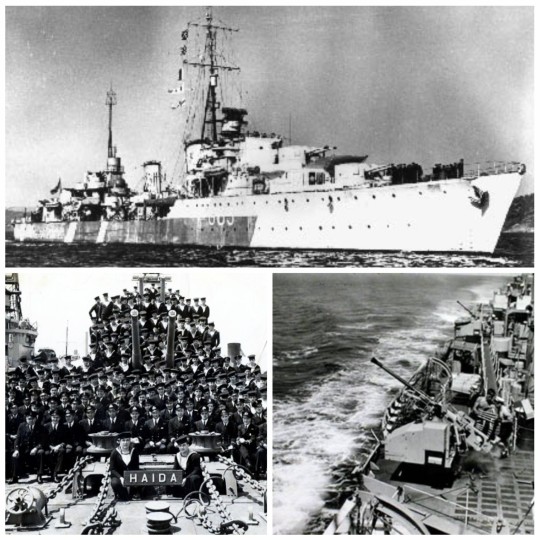
• HMCS Haida
HMCS Haida is a Tribal-class destroyer that served in the Royal Canadian Navy (RCN) from 1943 to 1963, participating in World War II and the Korean War. She was named for the Haida people.
The Tribals were designed to fight heavily armed destroyers of other navies, such as the Japanese Fubuki class. Canada chose the design based on its armament, with the size and power of the Tribal class allowing them to act more like small cruisers than as fleet destroyers. Haida was among the first batch of Tribal-class destroyers ordered by the RCN in 1940–1941. They were ordered with modified ventilation and heating systems for North Atlantic winter service. Haida's design was modified after deficiencies were noted in the lead ship of the Canadian Tribals, HMCS Iroquois. Haida, as one of the British-built Tribal-class destroyers, was 335 feet 6 inches (102.26 m) long between perpendiculars and 377 feet (115 m) long overall with a beam of 36 feet 6 inches (11.13 m) and a draught of 13 feet (4.0 m). As built, the destroyer displaced 1,927 long tons (1,958 t) standard and 2,745 long tons (2,789 t) at deep load. Haida had a complement of 14 officers and 245 ratings. As built, Haida was fitted with six quick-firing 4.7-inch (119 mm) Mk XII guns placed in three twin turrets. For secondary anti-aircraft armament, the destroyer was equipped with four single-mounted 2-pounder "pom-pom" guns. The vessel was also fitted with four 21-inch (533 mm) torpedo tubes for Mk IX torpedoes.
Haida's keel was laid down by Vickers-Armstrongs, Ltd. at their shipyard in Newcastle-upon-Tyne on September 29th, 1941. The destroyer was launched on August 25th, 1942 and commissioned into RCN service on August 30th, 1943. She underwent workups under her first commanding officer, H.G. DeWolf before reporting to the British Home Fleet at Scapa Flow in October 1943. After commissioning Haida was assigned to the Royal Navy's Home Fleet. On November 28th Haida was among the destroyer escort for the Russian convoy RA 54B, protecting it until it reached Loch Ewe on December 9th without loss. The convoy JW 55B sailed from Loch Ewe for Russia on December 20th. Haida was a member of its ocean escort. The German battleship Scharnhorst was deployed to intercept the convoy. While the cruisers escorting the convoy kept the German vessel at bay, Haida and the other escorting destroyers shepherded the convoy away from danger until the German battleship was sunk by a British force. Haida joined the escort of RA 55B on the return journey to the UK which sailed from Kola Inlet on December 31st and arrived on January 8th, 1944. On January 10th, 1944, she was reassigned to the 10th Destroyer Flotilla at Plymouth and took part in the Operation Tunnel and Operation Hostile sweeps in the Bay of Biscay and along the French coast of the English Channel.
By April, Haida had sailed on nineteen of the Operation Tunnel/Hostile missions. Haida continued the Operation Hostile sorties in company of sister ship Huron during the weeks leading up to Operation Overlord. The 10th Destroyer Flotilla were part of the covering force for surface attacks at the western entrance of the English Channel during the invasion of Normandy. On June 9th, Haida was part of Task Force 26 which engaged the German 8th Destroyer Flotilla, comprising Z32, Z24, ZH1 and T24 northwest of the Île de Bas. Following the fall of Cherboug, the German E-boats were transferred to Le Havre, freeing up the 10th Flotilla. The flotilla was then given the dual role of covering Allied motor torpedo boat flotillas and search and sink missions against German shipping along the French coast. On June 24th, while on patrol in the English Channel off Land's End, investigated a Liberator bomber dropping depth charges on a target. Haida and the British destroyer Eskimo began their own depth charge attacks after being informed that a submarine had been spotted. After several attacks, the submarine surfaced and attempted to run. Haida and Eskimo began to fire with all their guns and sank U-971. Haida rescued six survivors of the sunken submarine. On August 5th, Haida was part of a force engaged in an Operation Kinetic sweep. The force attacked a German convoy north of the Île de Yeu and sank the minesweepers M 263 and M 486, the patrol boat V 414 and the coastal launch Otto. During the battle a shell exploded in one of Haida's turrets and started a fire, killing two and injuring eight, knocking the turret out of action. Staying in the line of battle, the destroyers were engaged by shore batteries when they attempted to take on a second convoy and were forced to withdraw without doing much damage to the German merchant vessels.
Haida departed Western Europe on September 22nd for Halifax, Nova Scotia, arriving on September 29th. The destroyer returned to Scapa Flow in mid-January 1945 after refitting to receive new radar. In March Haida escorted aircraft carriers in minelaying operations off Granesund, Norway and assisted in attacks on shipping off Trondheim from March 24th-28th. On April 7th, Haida escorted seven anti-submarine warfare vessels from Greenock, Scotland destined for Soviet use at Vaenga, on the Kola Inlet. Haida experienced one of the last RCN engagements of the Second World War when she escorted convoy RA 66 from Vaenga from April 29th to May 2nd. The convoy was attacked in transit and Haida and Huron received near-misses from torpedoes fired by U-boats. In the skirmish, two U-boats were sunk, along with the frigate Goodall, and the convoy escaped in a snowstorm. Haida and Huron returned to Scapa Flow on 6 May and were assigned to relief operations at Trondheimsfjord, Norway on May 17th. Haida, along with Huron and Iroquois, left for Halifax in June to refit as part of Canada's contribution to Operation Downfall. They arrived on June 10th and Haida started a tropicalization refit but it was suspended after the surrender of Japan later that summer.
After the war, Haida was in inactive reserve for approximately one year but was prepared for reactivation in 1947 and underwent a refit for updated armament and sensors. This involved replacing the main armament, with the 4.7-inch guns removed and two twin Mk XVI 4-inch gun mounts installed forward and a twin 3-inch (76 mm)/50 calibre gun mount installed aft. Haida and her sister ship HMCS Nootka participated in exercises between the RCN's Atlantic Fleet and the United States Navy and Royal Navy over the next several years and were the first RCN ships to penetrate Hudson Bay in Fall 1948. Haida was involved in assisting during the grounding of the aircraft carrier HMCS Magnificent off Port Mouton, Nova Scotia on June 4th, 1949. In November 1949, Haida rescued the 18 members of the crew of a United States Air Force B-29 bomber that crashed in the Atlantic Ocean. The opening of the Korean War on June 25th, 1950 saw Haida once again activated for war duty. She was converted to a destroyer escort and began refit in July 1950 which saw various new armaments and sensors and communications systems. Following the Korean operations, Haida embarked on Cold War anti-submarine warfare duties with other NATO units in the North Atlantic and West Indies.
In 2002, at the urging of Hamilton, Ontario MP Sheila Copps, Parks Canada purchased Haida from the provincial government and towed her (with great difficulty) from her Ontario Place dock to a shipyard at Port Weller for a $5 million refit to her hull. She was taken to a new home on the Hamilton waterfront and arrived to an 11-gun salute from 31 Royal Canadian Sea Cadet Corps Lion and her 12-pounder naval field gun on August 30th, 2003, the 60th anniversary of her commissioning into the RCN.
#ww2#world war 2#world war ii#second world war#royal canadian navy#canadian history#history#british history#long post#british commonwealth#wwii
28 notes
·
View notes
Photo
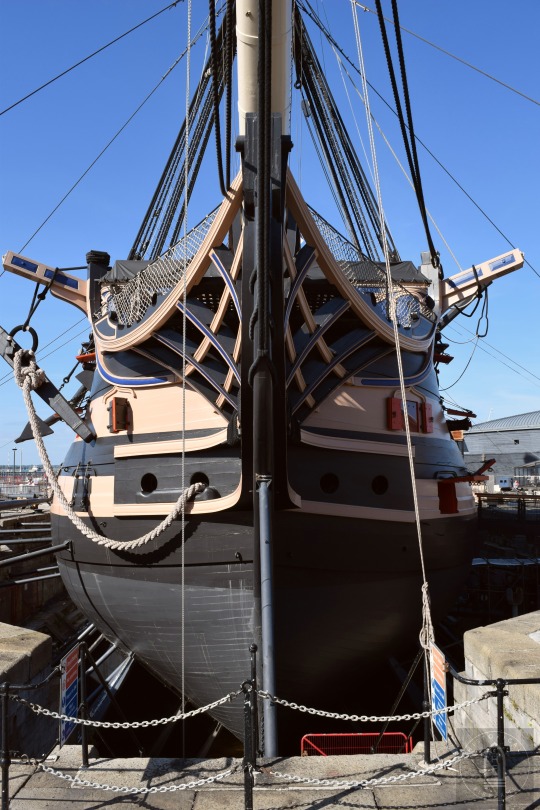
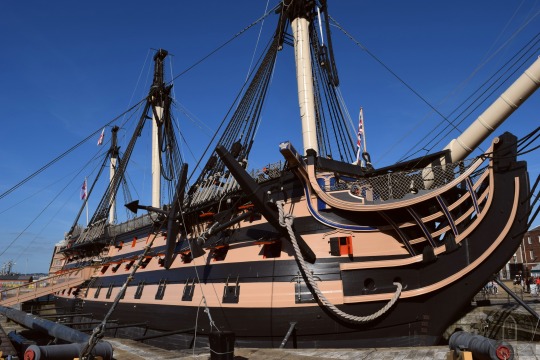
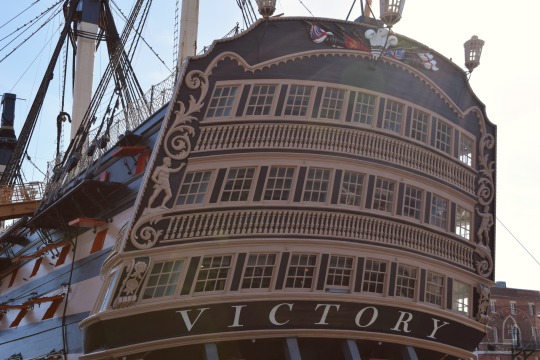
Trafalgar Day: HMS Victory
Last September I visited the Historic Dockyard at Portsmouth which is home to not only HMS Victory but also HMS Warrior, the Monitor HMS M33 and the preserved Mary Rose as well as historic Royal Navy Dockyard buildings containing museums and exhibitions. With today (21st October, 2019) being Trafalgar Day and the 214th anniversary of the momentous Napoleonic Naval Battle I thought I’d post some of the photographs I took during my visit to Victory - Admiral Nelson’s flagship and the last surviving ship of the line to take part in the battle.
Victory is currently painted as she would have been during the Battle of Trafalgar following research into just how she would have looked. Rather than her original red, the much later black and white or the famous bright yellow and black (with the black gun ports of the so-called Nelson-chequer) she is painted in a paler yellow/orange with a dark grey.
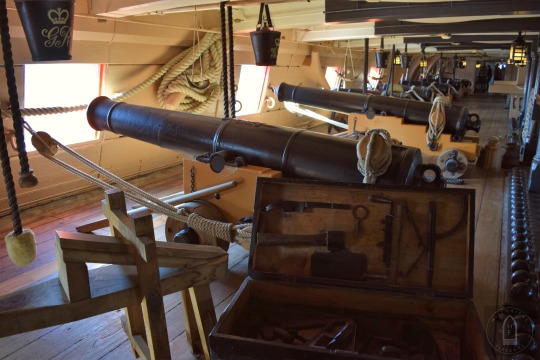
Some of Victory’s long 12 pounder guns on her maindeck with a carpenter’s chest open on display.
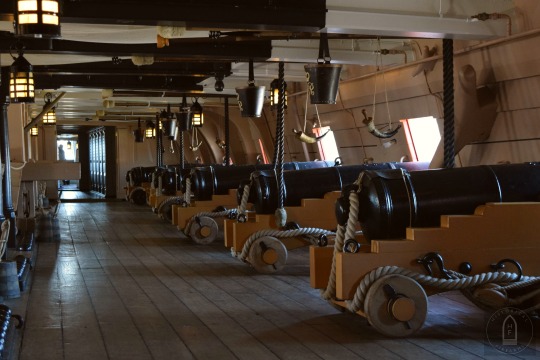
A view down one of Victory’s three gun decks which contain 32, 24, and 12 pounder guns. If memory serves these are some of the 32 pounders one the lower gun deck.

It is interesting to contrast the next few photos showing how officers and then ordinary seamen slept aboard Victory.


The hammocks slung here represent a small portion of how packed the deck would have been.
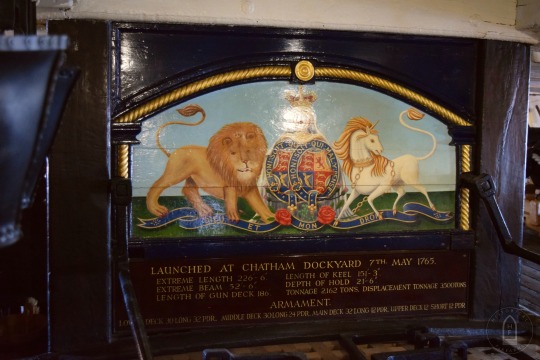
Some information about the ship and a beautifully painted Royal Coat of Arms above it.

Another shot of Victory’s main gun deck.

The stern window in HMS Victory’s Great Cabin on the upper gun deck. These would have been Nelson’s quarters.
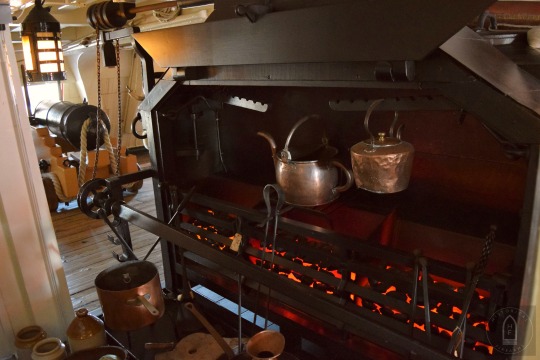
The Victory had a crew of over 800 and were fed by a large galley. Each man received one hot meal per day. This is Victory’s large Brodie stove.
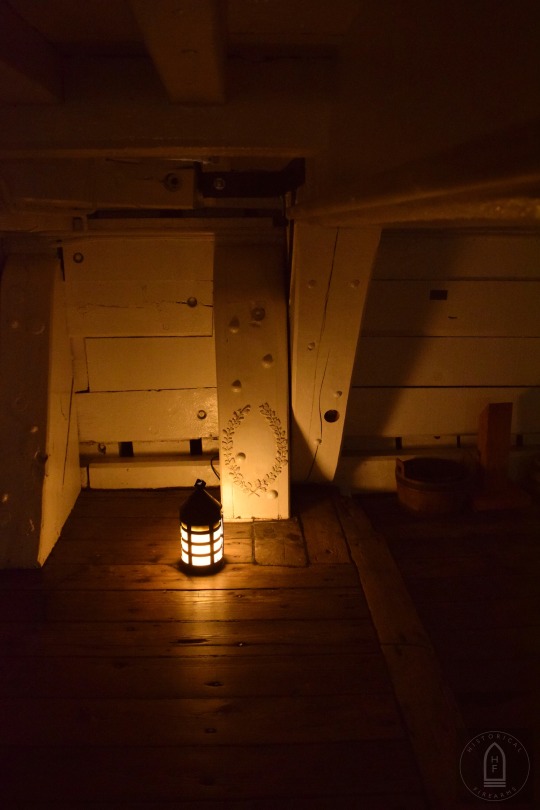
When Nelson was shot and mortally wounded on the quarterdeck of Victory at around 1pm, by a French marksman aboard Redoutable. Nelson was quietly carried below dying three hours later. The wreath and lantern mark where he spent his last hours in the ship’s cockpit on the orlop deck, below the waterline.
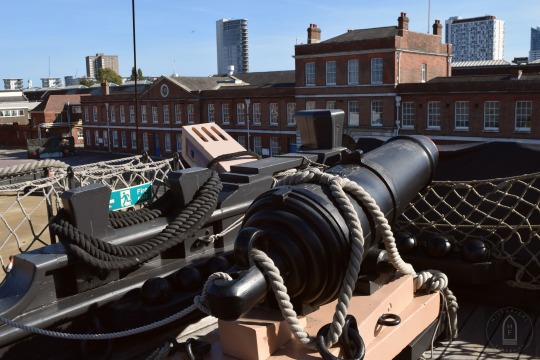
One of Victory’s 68 pounder carronades on her forecastle aiming out over some of the historic dockyard buildings. Carronades were short, relatively lightweight guns for their calibre. They were invented in the late 1770s and packed a huge short-range punch.
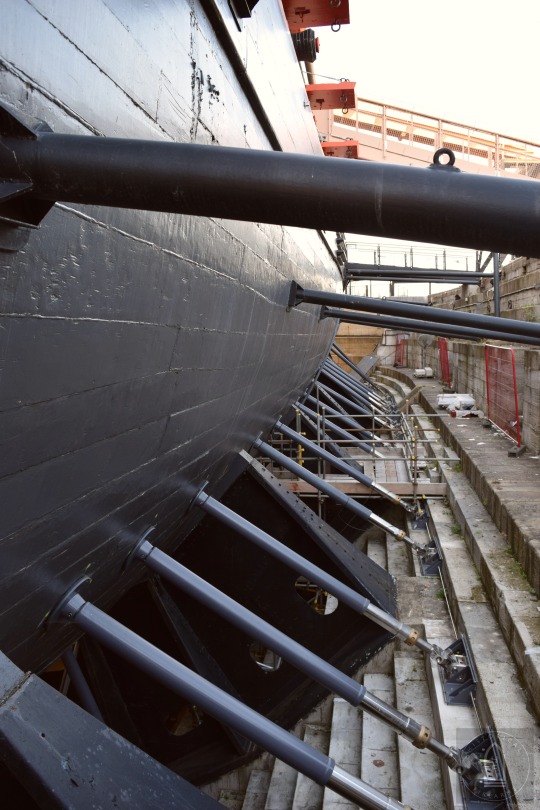
Finally here’s a look at the hydraulic jacks which support Victory in dry dock.
I’ve written more about the historic 1805 battle previously, find that here.
If you enjoy the content please consider supporting Historical Firearms through Patreon!
#History#Military History#Battle of Trafalgar#Trafalgar Day#HMS Victory#Nelson#Victory#Royal Navy#Portsmouth#Portsmouth Historic Dockyard#Horatio Nelson#Naval History#Maritime History#Ship of the Line#First Rate#Man of War#Sailing Ships#Warship#Ships#Sailing Ship#Musuem#cannon#ship cannon#carronade
579 notes
·
View notes
Text

Today we are travelling to the New World with the Kalmar Nyckel. A beautiful pinas with an eye-catching design and super cute ship's cats
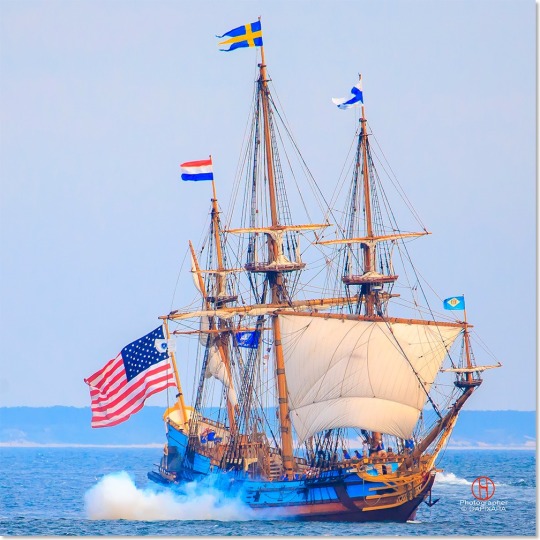
Kalmar Nyckel, 2014
Her history here:
The original Kalmar Nyckel was one of the great ships of the American colonial era. Built in Amsterdam in 1627, Kalmar Nyckel was an ordinary Dutch Pinnace (Pinas) of about 300 tons and 100 feet on deck, just one of a couple thousand similar small warships and gun-armed merchantmen built by the Dutch in this period.
In 1629, she was purchased by the Swedish Skeppskompaniet (Ship Company) with tax revenue from the strategic harbor town of Kalmar, on Sweden’s southeast coast, and renamed Kalmar Nyckel (“Key of Kalmar”). When not sailing on colonial voyages for the New Sweden Company, she served the Swedish Navy as an auxiliary warship until 1651. She was part of Gustav II Adolf’s famous invasion fleet at Peenemünde on the German coast of Pomerania in 1630, which marked Sweden’s entry into the Thirty Years’ War (1618-48).
Swedish Admiralty records from 1634 list her as carrying a crew of 55 men and 12 six-pounder cannon – probably typical of her wartime strength. Toward the end of her career, she saw bloody action in Torstenson’s War against the Danes in 1645 and transported Swedish diplomats across the Baltic during the negotiations that led to the Peace of Westphalia in 1648. Kalmar Nyckel is best remembered today as a colonial ship for the New Sweden Company. She launched the colony of New Sweden in 1638 as Governor Peter Minuit’s flagship, bringing the colonists who established the first permanent European settlement in the Delaware Valley – little Fort Christina, which would grow to become the city of Wilmington, Delaware.
An exceptional ship with an extraordinary record of endurance, Kalmar Nyckel would make eight successful crossings of the Atlantic (four roundtrips between Gothenburg and Fort Christina from 1637 to 1644) more than any documented colonial ship of the era. Kalmar Nyckel was decommissioned from the Swedish Navy on June 19, 1651, by order of Queen Christina herself, and sold to a Dutch merchant living in Stockholm, Cornelis Roelofsen. An inspection by the Swedish Admiralty had determined that her aging condition would make her unsuitable for a fifth voyage across the Atlantic for the New Sweden Company.
Her new owner, Roelofsen had Kalmar Nyckel – now called by her Dutch name, Kalmar Sleutel (“Sleutel” is Dutch for “Nyckel,” which both mean “Key” in English) refitted and up-gunned to 24 six-pounder cannons. She was anchored in Amsterdam harbor by April 22, 1652, just in time to be leased as a naval escort by the Dutch Navies, which were looking to acquire 150 warships in preparation for a looming war against the English. Kalmar Sleutel (Nyckel) soon joined 15 ships of the escort squadron that was guarding the Dutch herring fleet in the North Sea off the east coast of Scotland. On July 22, 1652, she would be sunk in the bloody Battle of Buchan Ness, gallantly defending the fishing fleet against a fleet of 66 English ships in the first engagement of what would be called the First Anglo-Dutch War (1652-1654).
Source
#naval history#naval artifacts#kalmar nyckel#17th century#advent calendar#day 15#age of sail replica
77 notes
·
View notes
Photo
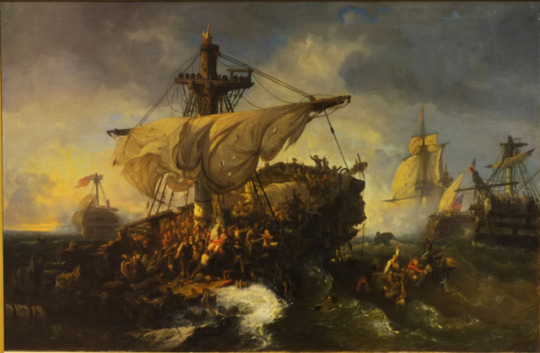
Hendrik Frans Schaefels - The sinking of the Vengeur -
Vengeur ("Avenger") was a first-rate 118-gun ship of the line of the French Navy, of the Océan type, designed by Jacques-Noël Sané. She was the first ship in French service to sport 18-pounder long guns on her third deck, instead of the lighter 12-pounder long guns used before for this role.
Laid down as Peuple in covered basin no.3 at Brest Dockyard in October 1793, she was renamed as Vengeur after the Bataille du 13 prairial an 2 in honour of the Vengeur du Peuple by a decree passed by the National Convention.
She was launched on 1 October 1803 and completed in February 1804. She was again renamed in March 1805, becoming Impérial.
She took part in the Battle of San Domingo on 6 February 1806. Severely battered by several British ships, most of her artillery out of order and without means to manoeuver, she was beached by her captain to prevent her sinking and capture. It took several days to evacuate her crew, of whom many were wounded; after a few days, British ships closed in and sent boats to capture those remained aboard and set fire to the wreck.
Hendrik Frans Schaefels or Henri François Schaefels, also known as Rik Schaefels and Henri François Schaefels (Antwerp, 2 December 1827 – Antwerp, 9 June 1904) was a Belgian Romantic painter, draughtsman and engraver known for his seascapes, cityscapes, genre paintings, landscapes with figures and history paintings. He worked in the Romantic style popular in Belgium in the mid nineteenth century and was highly esteemed in Europe for his representations of historic naval battles.
Belgium was in the grip of Romantic art at the time Schaefels started out on his artistic career. Belgian Romantic painters such as Gustaar Wappers (1803-1874), Nicaise de Keyser (1813- 1887), Edouard Hamman (1819-1888) and Gallait Louis (1810-1887) gained international success with their history paintings. These usually depicted glorious or famous events in the history of what became the state of Belgium, which had only recently been established as an independent country in 1830. Such historic themes were the favorite subjects of artists working in the years from 1830 to 1850.
Hendrik Frans Schaefels combined in his work this tradition of history painting and marine art. He excelled in his dramatic portrayals of naval battles and other historical events that took place at sea such as the Battle of Trafalgar, episodes from the wars between England and the Dutch Republic. His large compositions, with sizes varying from 2 to 9 meters long, often showed a pseudo-Baroque design. Schaefels painted both compositions depicting an entire naval battle as well as more anecdotal episodes depicting the action on the deck of a single warship such as in the Death of Nelson. For his naval battles he relied on historical literature and printed materials.
Schaefels also painted more recent and peaceful marine events such as the Queen Victoria on board the Royal Yacht, which depicts the 1843 visit of Ostend by Queen Victoria with her husband Prince Albert.
13 notes
·
View notes
Text
Malta, and the hunt for the Maltese falcon..
Only kidding. There aren't very many birds of prey left here anymore. Although there is a falconry place where they are successfully breeding them in captivity. Or, am I seeking the jewel encrusted version made famous by Humphrey Bogart's character, Sam Spade in the 1941 classic???

The Republic of Malta is an Archipelago in the middle of the Mediterranean Sea and as its such a strategic naval location it has been inhabited since about 5900 BC. There has been a succession of powers who have contested and ruled the islands. The usual suspects line up: Phoenicians and Carthaginians, Romans, Greeks, Arabs, Normans, Aragonese, Knights of St. John, French, and lastly the British. The British made Malta an independent state of the commonwealth in 1964, with the country achieving full autonomy as a republic in 1974. This explains the very Britishness that you experience here (if that’s not a real word it should be). They have retained a lot of the English parliamentary procesess, education, and driving on the left hand side of the road. That being said, Malta still retains its own identity and that identity can be found out and about anywhere on its islands.
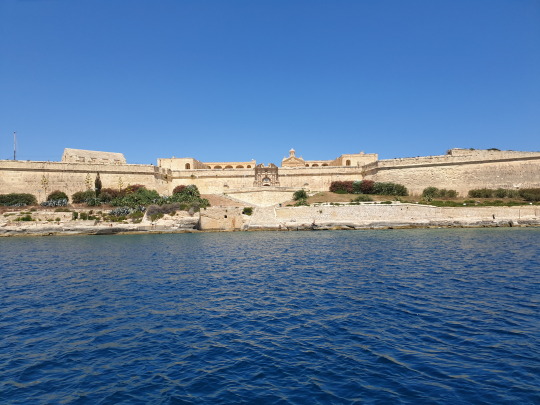
Maltese food is its own uniqueness. Rabbit, seafood, potatoes and tomatoes feature prominently in a Maltese diet. Their 'street food' is Pastizzi, traditionally made with either cheese or mushy peas. Now they have such a variety of them it's hard to choose! I went with the exceedingly delicious cheese, crunchy crispy pastry filled with gooey cheesy goodness...yum. I will admit I was quite surprised at how much of an array of food is available here. A lot of Mediterranean influences mixed with classic British fare are all available at most outlets. This surprise could also be steeped in the fact I'd spent the past two weeks in Sicily which is very much only Italian food!
The historic buildings like the Citadel in Valletta, or in Victoria on Gozo are like little time capsules, beautifully restored and an intriguing way to spend some time in history. The town or fortress of Mdina is astounding to wander around. Fortunately for me it seemed that I picked a time that but wasn't teeming with people, making it that much more remote to be walking down a tiny roadway with no one else in sight. It was during a chat with a cab driver that I discovered the cost of progress here. Unfortunately only some of the old buildings in strategic locations are being preserved. The rest, it seems, are being pulled down with multi storey appartments going up in their place. Same as everywhere else unfortunately...


The Churches are something else here. Catholicism is the main religion, but they actually have freedom of religion and choice of worship written in their constitution. During Spring/Summer there is a religious festival involving feasts, parades and fireworks in a different village each week. There are deities positioned on street corners, in alcoves, in prominent places in courtyards, I’ve also noticed they name their houses after saints or important religious figures. I've seen about 50 houses named with either simple or intricately decorated name plates: ‘Madonnina’. Religion is very strong here, and they love to include you in their celebrations (with no pressure!) The church of Mosta was amazing. The design of the present church is based on the Pantheon in Rome. At one point in history it had the third largest unsupported dome in the world. (I have given up confirming any of these claims anymore..😂) The cool part of the story is the church narrowly avoided destruction during WWII. On 9 April 1942 a German aerial bomb pierced the dome and fell into the church during a packed Mass, but failed to explode. This was seen as a miracle by the Maltese. On Gozo amongst their churches was the incredible Basilica of the National Shrine of the Blessed Virgin of Ta' Pinu. Yeah yeah, I know everytime I think I'm churched out, I come across some fantastic ones.
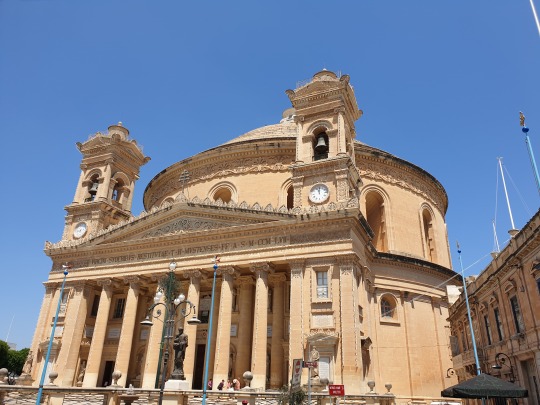


On Malta I stayed in Silema which was in an area with easy access to public transport. Not quite the party area like St Julians but close enough to it. I also stayed on Gozo for 3 nights in the beautiful Xendli bay area. It seemed more logical to stay over there than going on day trips to get there. Both have very good public transport systems. On gozo the buses are every hour as opposed to every half hour on the main island. But hey, you're on island time so what's the hurry?! I also used the hop on off bus on both islands and regretted it. Although it has a commentary, It's way cheaper to take local buses to see the sights. There are a variety of transport passes you can purchase that can make it even cheaper depending how long you are here. I loved taking a harbour and rivers cruise (very handy that they all leave from Silema...😁). Somehow I lucked out and picked the cruise that had us just below the saluting battery for 12 noon. The battery forms the lower tier of the fortress overlooking the Grand harbour. Every day at 1200 and 1600 a replica SBBL 32 pounder Canon is fired. We were under it when it fired...awesome!

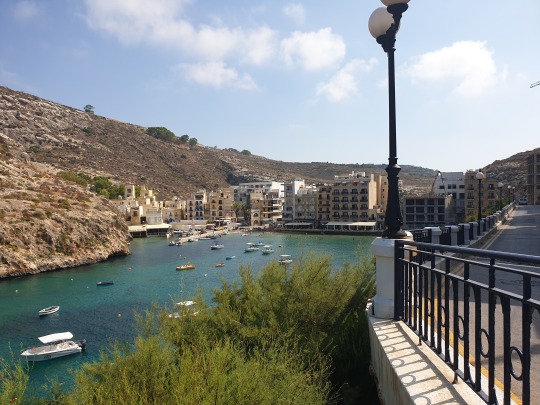
View of where I stayed in Xlendi...
Heads up, when booking accomodation in Malta it's more often than not cheaper to go directly to the hotel's website. It's either cheaper or you get breakfast included, often both! (This does not always happen in other places!)
I've had a blast on Malta! It's been mega hot (summer and all that!!) I've still been trying to kick this bug that's been haunting me, so feel that I haven't quite given Malta what I could have. All the same it's a fabulous gem, packed with history, stories, traditions, fabulous food and great people. According to Google translate: nirringrazzjak u narak id-darba! (thank you and see you next time!) As usual there's more photos to come!!

I'm off to Italy today, heading to the lakes area, to catch up with an awesome couple I met on the RUM (Romania, Ukraine, Moldova) tour I did all the way back in May (oh so long ago now!!) Can't wait!!!
0 notes
Photo
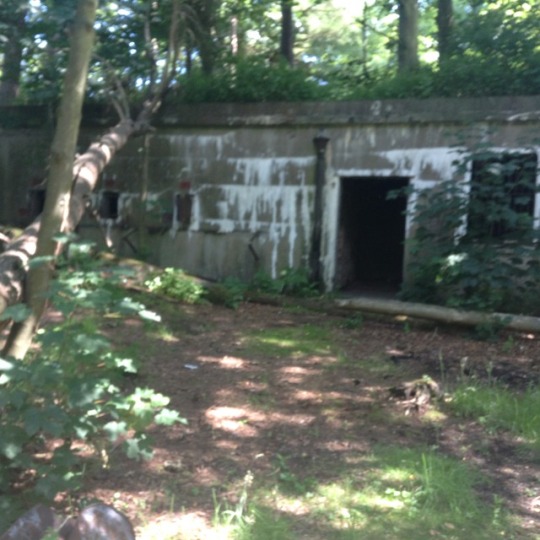
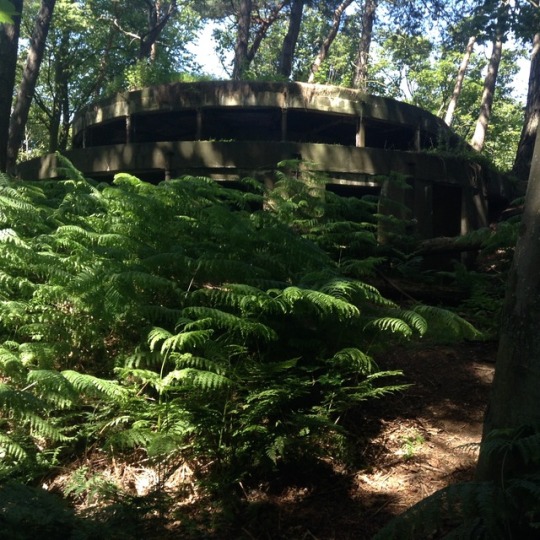
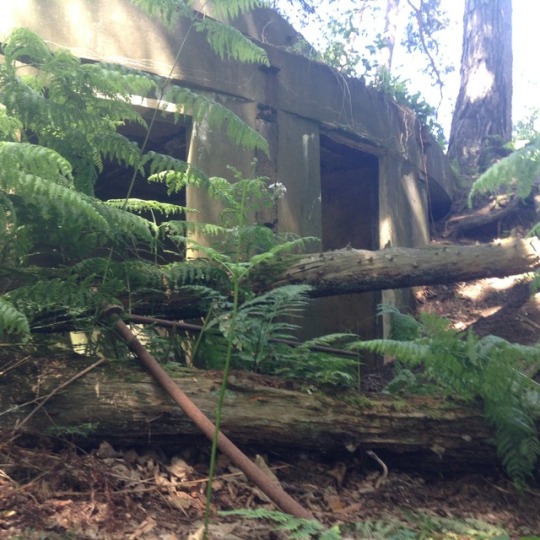

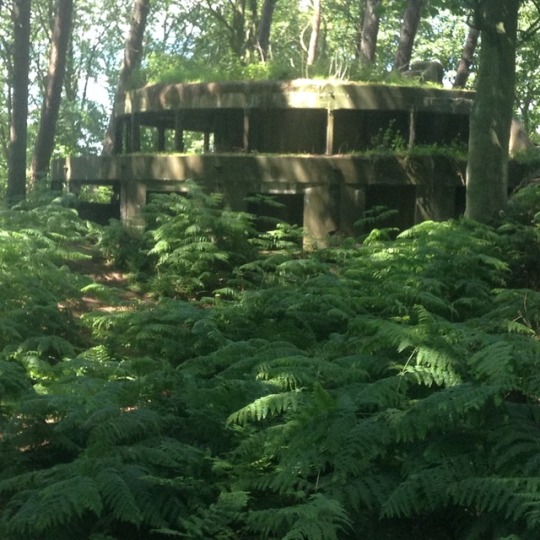
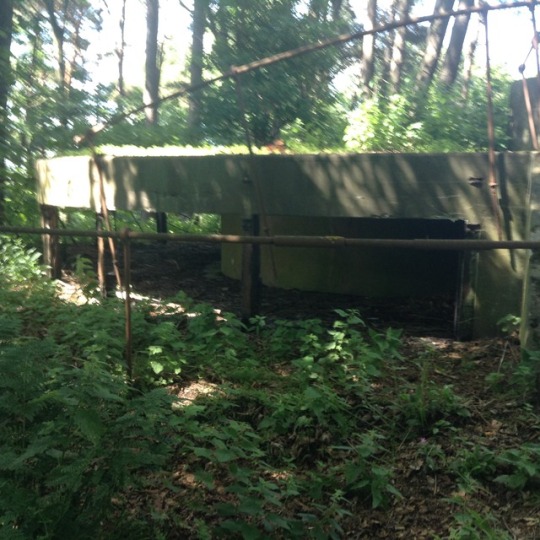




A selection of photos I took at Hound Point Battery, located just east of south Queensferry on the Firth of Forth. The Firth of Forth was an important naval area for Britain during the First World War with the major naval base of Rosyth along with a couple smaller ones. Also played host to the main fleet (or Grand Fleet) for a period making it a high value target for attacks. The last photo is a photo taken of the battery when it was still in use, note the earthworks and lack of trees in front of the guns.
The defences consisted of two guns, originally BL 6-inch Mk VII naval gun which were replaced with QF 12 pounder 18 cwt naval guns in 1916. Rectangular building situated behind was a magazine consisting of two main rooms and a small corridor separating them. Whilst I could find no definitive evidence it appeared only one room was used as a magazine based on the “windows”, I doubt a magazine would have used bars like you see on the right hand side rather metal hatches of sorts as you see on the left. These defences were part of a series of similar structures located along the Firth of Forth and the islands.
Unfortunately I could find very little evidence of earthworks or observation posts which would have accompanied the battery (and can be seen in the last picture). Were a few scattered concrete structures in the surrounding area but were indistinguishable as anything significant. As for earthworks the woodland has overgrown significantly and earth has spilled into the concrete structures making it hard to distinguish anything.
I really liked the view in the second last photo, it’s what it currently looks like from the gun platforms looking down onto the forth. Such a significant change from the landscape there a hundred years ago, yet if it wasn’t for the abandoned battery there you wouldn’t know it.
If you’re interested in more of the history of the Forth during the war there’s a really nice collection of information put together by some local history folk called Queensferry at War .
#Jamie does a history post#I am kinda pleased with this even though it's not an area I have any significant knowledge in#should really think about getting a good camera sometime#or at least a half decent one#now for the random relevant tags#world war one#ww1#naval history#Queensferry#firth of forth#ww1 naval history#coastal defnces#not done anything like this before#I'd like to again sometime if I come across anything interesting#maybe I'll do one for the old fort in my town#or the hill fort I had intended to visit
9 notes
·
View notes
Photo

Late in 1775, Congress voted to build 4 36-gun 12-pounder frigates. Three of them (my most recent post) were built to the official design, but the fourth was built in the Newburyport Massachusetts area to a local design. She was to be named John Hancock, but quickly she was renamed Alliance. Under French "mad" Capt. Pierre Landais, she accompanied John Paul Jones when he captured Serapis in 1779, but he fired into both sides indiscriminately! While carrying a load of gold home from Cuba, she fought the last naval battle of the war. Congress was broke, so they sold off all the rest of the navy's ships, and in 1785 Alliance was the last ship sold. She became an Eastindiaman, and once held the record for sailing around the world in the shortest time.
0 notes
Photo

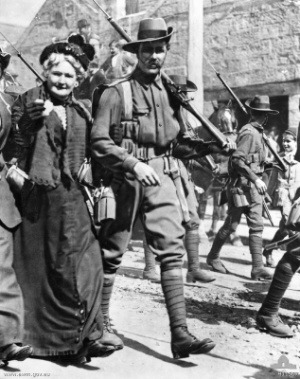


New Guinea during World War I --- The Battle of Bita Paka and the Siege of Toma,
World War I typically brings up scenes of trench warfare from the Western Front. However World War I was fought by people from all over the world on battlefields all over the world. Before World War I, New Guinea was divided in two, the northern half controlled by Germany, the southern half British (administered by Australia). The islands of New Guinea were especially important for Germany because they were home to many supply and communications stations for the German East Asiatic Squadron, a fleet of cruisers which harassed Allied shipping in the Pacific and Indian Ocean throughout the war.
As soon as the war began, the Australian government and military began planning for an operation to seize New Guinea. It would become the first independent Australian military operation and result in the first Australian casualties of the war. The operation was conducted by the Australian Naval and Military Expeditionary Force, consisting of 3,000 soldiers and sailors. Australia was quickly able to seize most of New Guinea without resistance, however at a radio station at a small village called Bita Paka on New Britain Island was a force of 61 German soldiers and 240 native police who were determined to fight.
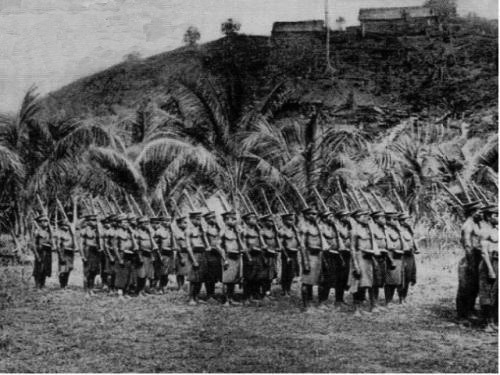
On September 11th, 1914 a force of 500 Australian soldiers approached Bita Paka intent on capturing the radio station. There they were met by German and native soldiers who fought a retreating skirmish, until eventually the settled into trenches and fortifications. The Germans had intended to draw the Australians into a trap, a pipe mine which was to be detonated when the Australians advanced across a road. However the Australians were able to locate and disable the mine, foiling the German plans.

With superior numbers, the Australians were able to quickly outflank and overwhelm the German lines. The Germans retreated 19 miles through the dense jungle to the village of Toma, hoping to hold out until the East Asiatic Squadron arrived with reinforcements. However, the Australians would follow them with a 12 pounder artillery piece and commence bombardment of the village. Most of the native soldiers fled in panic, convincing the Germans to surrender. One German officer named Hermann Detzner escaped into the jungle with 20 native soldiers, where he spent the rest of the war in hiding. At the end of the operation six Australian soldiers were dead and four wounded. The Germans suffered 1 German officer dead, 30 native soldiers killed, and 11 wounded.

432 notes
·
View notes